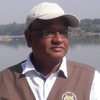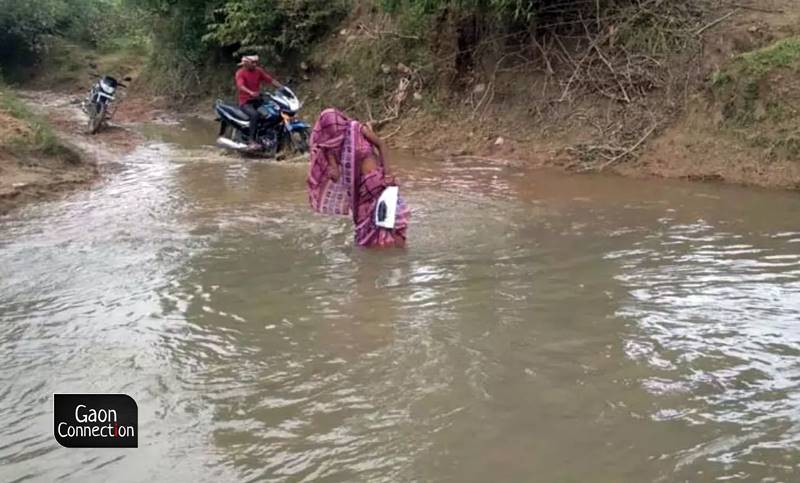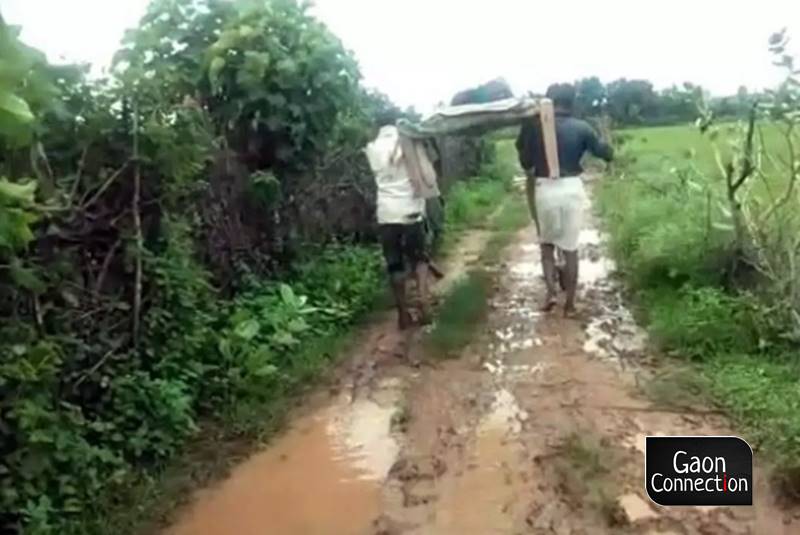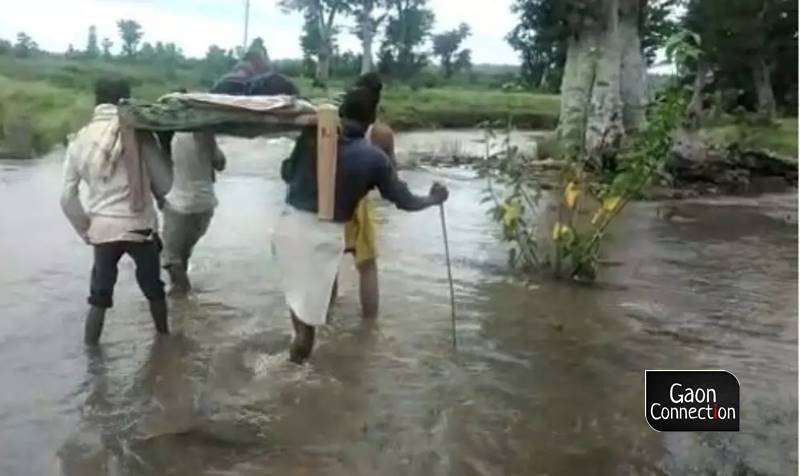World’s Indigenous Peoples Day: Tribal villages in Panna, Madhya Pradesh turn into islands in the monsoon
Even as we celebrate the World’s Indigenous Peoples day today, there are several adivasi villages in Panna district of Madhya Pradesh that lack even basic amenities. For four months of the monsoons, the inhabitants of these villages are marooned and the only way to reach the outside world is walking through slushy bogs, swollen streams and deep forests, till they reach a roadhead.


Pregnant women suffered the most in this season. All photos by arrangement.
Panna, Madhya Pradesh
Today is the International Day of the World’s Indigenous Peoples. But that means nothing to Bablu Singh Dhurve, an adivasi from Panna district of Madhya Pradesh. The 36-year-old inhabitant of Kanchanpura basti in the tribal village of Makkepala took ill on August 3. He needed urgent medical attention, but the rains had rendered his village into an island. With no health facilities in the village, he was carried on a cot by fellow villagers for three kilometres through slush up to the nearest roadhead.
“Bablu had to be carried to Jhaladumri from where he was taken by bus to the neighbouring district of Katni more than fifty kilometers away, where he was treated,” Prem Singh Paraste, former gram pradhan of Fatehpur panchayat, told Gaon Connection.
Several tribal villages like Makkepala in Panna district are marooned, and this is an annual occurrence during the monsoon season. This year, a few showers have washed away pathways, making it near-impossible for their inhabitants to reach help.

These adivasi villages in Panna are surrounded by slush and in order to get away from them or get to them, people have to cross mountain streams and wade through mire.
Also Read: Stoned to death: Tribal labourers in Panna’s stone mines continue to die of silicosis
“There are no roads to speak of and the few paths there are, become unusable after a rainfall or two,” Paraste complained. The Panna district headquarters is more than 100 kilometres away, said the former gram pradhan. Pregnant women suffered the most in this season, he added.
Tribal villages with no basic amenities
“Pawai tehsil in Panna district has several adivasi villages and their condition during the rains is awful,” Ashok Jain, social worker in this region, told Gaon Connection. Even the most basic of amenities are lacking in Makkepale, he pointed out. “There are two hundred and fifty of them living in Kanchanpura basti where Babloo came from, and they all drink water from drains,” he added.
Also Read: Sumibai Taral has lived with a broken elbow for 20 years
On being contacted, Ram Pratap Singh, tehsildar of Raipura tehsil, where Bablu Singh Dhurve’s Makkepala village lies, told Gaon Connection, “A proposal will be submitted to make a road from the village,”.

According to him there were a few hurdles, as part of the area came under the forest division. “But we will come up with some solutions to make a few bridges over the mountain streams and some roads,” he said.
‘Island’ villages
Not too different from Kanchanpura is the condition of Kudra village in Ajaigarh, Panna with a population of about 600. For years, the inhabitants of the village have been praying, in vain, for a road connecting their village to the Dharampur gram panchayat (the largest gram panchayat in Ajaigarh). The buses stop at Dharampur after which inhabitants of Kudra have to walk seven kilometres to their village. Ajaigarh lies about 52 kilometres away from the Panna district headquarters.
“There is flooding in the mountain streams during the monsoons. There are nearly seven streams one has to cross in order to reach Kudra,” Sanjay Singh Rajput, a social worker from Dharampur, told Gaon Connection. “Almost all communication from the village stops and it is as if the inhabitants are imprisoned on their island,” he added.
“On August 5, a pregnant woman from Kudra walked seven kilometers to Dharampur in order to get vaccinated,” Sanjay Singh said. “It is dangerous to ride motorbikes in this season and ambulances do not ply here even on regular, non rainy days either. Every year for four months the villagers are prisoners in their own village,” he added.

Also Read: Stoned to death: Tribal labourers in Panna’s stone mines continue to die of silicosis
According to the inhabitants of these isolated villages, the lack of even basic facilities in their villages is coming in the way of finding brides for their young menfolk. Even the social fabric of the villages are changing as no one wants to send their daughter here, the inhabitants said.
The sole village school at Kudra is only up to the eighth class. Because of this, most of the children there drop out of studies as it is so difficult to go elsewhere to continue. For four months of the year, the roads leading out of the village are non-existent, there are seven swollen streams that are dangerous to cross in these times and even in the winters, the children have to navigate forests, if they have dreams to study further.
Read the story in Hindi.

